-
 Bitcoin
Bitcoin $107,352.1067
0.28% -
 Ethereum
Ethereum $2,429.3531
-0.90% -
 Tether USDt
Tether USDt $1.0001
-0.02% -
 XRP
XRP $2.1894
4.62% -
 BNB
BNB $646.7968
0.36% -
 Solana
Solana $147.4290
4.03% -
 USDC
USDC $0.9998
-0.02% -
 TRON
TRON $0.2756
1.52% -
 Dogecoin
Dogecoin $0.1630
1.14% -
 Cardano
Cardano $0.5612
1.18% -
 Hyperliquid
Hyperliquid $37.0580
-0.05% -
 Bitcoin Cash
Bitcoin Cash $496.9410
-0.09% -
 Sui
Sui $2.7318
3.19% -
 Chainlink
Chainlink $13.1503
0.58% -
 UNUS SED LEO
UNUS SED LEO $9.0766
0.55% -
 Avalanche
Avalanche $17.7220
1.46% -
 Stellar
Stellar $0.2380
1.52% -
 Toncoin
Toncoin $2.8439
0.38% -
 Shiba Inu
Shiba Inu $0.0...01143
1.84% -
 Litecoin
Litecoin $85.8053
1.47% -
 Hedera
Hedera $0.1483
2.70% -
 Monero
Monero $314.3240
2.12% -
 Bitget Token
Bitget Token $4.6725
0.77% -
 Dai
Dai $1.0000
0.00% -
 Polkadot
Polkadot $3.3555
1.28% -
 Ethena USDe
Ethena USDe $1.0001
0.02% -
 Uniswap
Uniswap $7.0890
2.64% -
 Pi
Pi $0.5355
-3.40% -
 Pepe
Pepe $0.0...09393
1.06% -
 Aave
Aave $256.8136
-1.90%
What is Funding Rate?
Crypto perpetual futures' funding rates, reflecting the cost of borrowing/lending, signal market sentiment: positive rates suggest bullishness, negative rates bearishness. Understanding these rates is crucial for risk management and informed trading decisions.
Mar 11, 2025 at 04:56 am
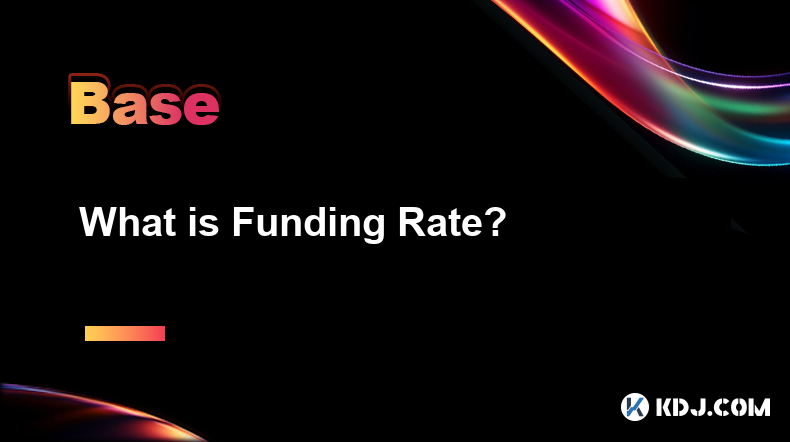
Key Points:
- Funding rates represent the cost of borrowing or lending cryptocurrency in perpetual futures contracts.
- Positive funding rates indicate a bullish market sentiment, while negative rates suggest bearish sentiment.
- Understanding funding rates helps traders gauge market sentiment and manage risk.
- Funding rates fluctuate based on supply and demand for perpetual contracts.
- High funding rates can impact profitability and trading strategies.
What is Funding Rate?
The term "funding rate" specifically refers to a mechanism within the perpetual futures market of cryptocurrencies. Unlike traditional futures contracts with expiry dates, perpetual futures aim to mimic the spot price of an asset indefinitely. To achieve this price stability, a funding rate is implemented. This rate is periodically paid from the long positions (those betting on price increases) to the short positions (those betting on price decreases), or vice versa. It essentially balances the supply and demand for the contract, preventing extreme deviations from the spot price.
How Funding Rates Work:
The funding rate is calculated based on the difference between the perpetual contract's price and the spot price of the underlying cryptocurrency. If the perpetual contract price is higher than the spot price, long positions pay short positions. Conversely, if the perpetual contract price is lower than the spot price, short positions pay long positions. This payment aims to keep the perpetual contract price aligned with the spot market. The frequency of these payments, typically every 8 hours, varies depending on the exchange.
Interpreting Funding Rates:
A positive funding rate signifies that more traders are long (bullish) on the asset, leading to upward price pressure on the perpetual contract. To counteract this, longs pay shorts to bring the contract price closer to the spot price. A negative funding rate, conversely, indicates that more traders are short (bearish), putting downward pressure on the contract price. In this case, shorts pay longs. Therefore, the funding rate acts as an indicator of market sentiment.
Factors Affecting Funding Rates:
Several factors influence the magnitude and direction of the funding rate. Demand for leverage, the overall market sentiment (bullish or bearish), and the availability of liquidity all play significant roles. High demand for long positions, for instance, can drive a positive funding rate higher. Similarly, increased short positions can amplify a negative funding rate. News events, regulatory changes, and significant price movements can also significantly impact funding rates.
Impact of High Funding Rates on Traders:
High funding rates, whether positive or negative, can substantially affect a trader's profitability. For instance, a consistently high positive funding rate can erode the profits of long positions over time, even if the price of the asset is rising. Conversely, a persistently high negative funding rate can reduce the returns of short positions, even with a falling asset price. Therefore, traders need to account for funding rates when assessing their potential gains and losses.
Funding Rates and Arbitrage Opportunities:
The difference between the spot price and the perpetual contract price creates potential arbitrage opportunities for sophisticated traders. If the difference is significant enough, traders can simultaneously buy the asset on the spot market and sell it on the perpetual market, profiting from the price discrepancy. However, this strategy requires careful management of risk and execution timing, considering the potential for rapid price fluctuations.
Funding Rates and Market Manipulation:
While funding rates are a natural mechanism within the perpetual futures market, the potential for manipulation exists. Coordinated actions by large traders could artificially inflate or deflate funding rates, impacting market prices and other participants. Exchanges employ various measures to detect and mitigate such activities, but the risk remains.
Calculating Funding Rates:
The precise calculation of funding rates varies between exchanges. However, the core principle remains consistent: it’s determined by the difference between the perpetual contract price and the spot price, weighted by the number of long and short positions. Each exchange typically publishes its funding rate calculation methodology, allowing traders to understand how it's determined for each asset.
Using Funding Rates in Trading Strategies:
Traders can incorporate funding rates into their trading strategies to gauge market sentiment and manage risk. For example, a persistently high positive funding rate might signal an overbought market, suggesting a potential short opportunity. Conversely, a consistently high negative funding rate could indicate an oversold market, potentially setting up a long opportunity. However, this is just one factor to consider, and other technical and fundamental analysis should be used in conjunction.
Funding Rates and Different Cryptocurrencies:
Funding rates vary significantly across different cryptocurrencies. The volatility of an asset, its market capitalization, and overall market sentiment all contribute to the differences observed. For instance, highly volatile cryptocurrencies might experience more extreme funding rates than more stable assets. Understanding these differences is critical for effective trading across various cryptocurrencies.
Risk Management and Funding Rates:
Proper risk management is paramount when trading perpetual futures contracts. Traders must always account for funding rates when evaluating potential profits and losses. Ignoring funding rates can lead to unexpected losses, even in seemingly profitable trades. Using stop-loss orders and position sizing techniques is crucial to mitigating risk.
Frequently Asked Questions:
Q: What happens if the funding rate is zero?
A: A zero funding rate indicates that the price of the perpetual contract is perfectly aligned with the spot price. There is no need for a payment to either longs or shorts to maintain price stability. This is a neutral market sentiment indication.
Q: Can funding rates predict future price movements?
A: No, funding rates are not a perfect predictor of future price movements. They reflect current market sentiment and imbalances, but they don't guarantee future price direction. They are a valuable tool for analysis but should be used in conjunction with other indicators.
Q: How frequently are funding rates updated?
A: The frequency of funding rate updates varies across different cryptocurrency exchanges. Common intervals include every 8 hours, but some exchanges may use different schedules. Always check the specific exchange's terms and conditions.
Q: Are funding rates the same across all exchanges?
A: No, funding rates can differ slightly between exchanges due to variations in liquidity, trading volume, and the overall composition of long and short positions.
Q: How do I find the funding rate for a specific cryptocurrency?
A: Most cryptocurrency exchanges that offer perpetual futures contracts display the current funding rate for each asset directly on their trading interface. Look for a section detailing contract specifications or fees.
Disclaimer:info@kdj.com
The information provided is not trading advice. kdj.com does not assume any responsibility for any investments made based on the information provided in this article. Cryptocurrencies are highly volatile and it is highly recommended that you invest with caution after thorough research!
If you believe that the content used on this website infringes your copyright, please contact us immediately (info@kdj.com) and we will delete it promptly.
- RUVI Token Soars: Can It Eclipse Cardano's Forecast?
- 2025-06-29 02:30:12
- Meme Coin Mania: Can Little Pepe Outshine Shiba Inu and Dogecoin?
- 2025-06-29 02:30:12
- XRP Tokens: Navigating Financial Status and the Art of Buying In
- 2025-06-29 02:50:12
- Shiba Inu, Trump Coin, and the Crypto Bull Run: What's the Deal?
- 2025-06-29 03:50:12
- Coinbase on the 2025 List of Influential Companies: A Crypto Powerhouse?
- 2025-06-29 04:10:12
- Solana, Shiba Inu, and Pepe Coin: What's Hot and What's Not in the Crypto World
- 2025-06-29 03:55:13
Related knowledge
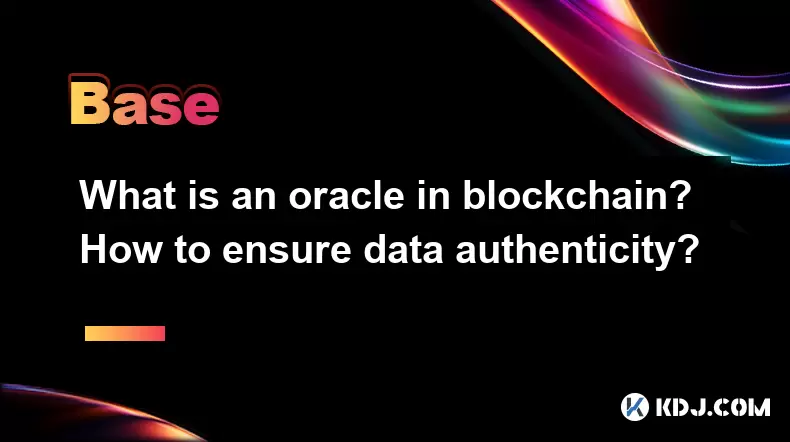
What is an oracle in blockchain? How to ensure data authenticity?
Jun 19,2025 at 08:49pm
Understanding the Role of an Oracle in BlockchainIn the context of blockchain technology, an oracle serves as a bridge between the blockchain and external data sources. While blockchains are inherently secure and decentralized, they cannot access real-world information on their own. Oracles enable smart contracts to interact with off-chain data such as ...
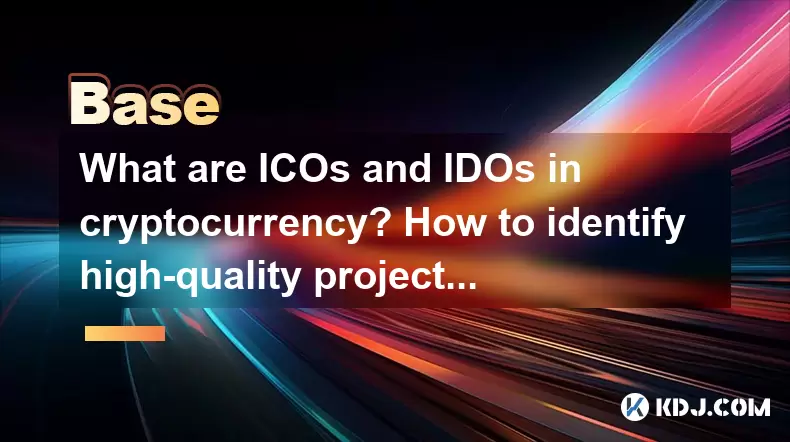
What are ICOs and IDOs in cryptocurrency? How to identify high-quality projects?
Jun 22,2025 at 11:49am
Understanding ICOs in CryptocurrencyInitial Coin Offerings (ICOs) are fundraising mechanisms used by cryptocurrency startups to raise capital for their projects. In an ICO, a company creates and sells its own tokens to investors in exchange for established cryptocurrencies like Bitcoin or Ethereum. The process typically involves the release of a whitepa...
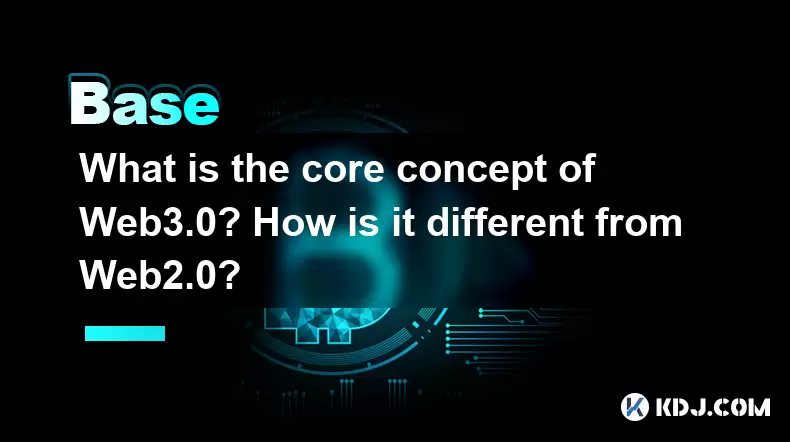
What is the core concept of Web3.0? How is it different from Web2.0?
Jun 21,2025 at 05:56pm
Decentralization as the Foundation of Web3.0The core concept of Web3.0 revolves around decentralization, which fundamentally challenges the centralized architecture of Web2.0. In Web3.0, control and ownership are distributed across a network rather than being held by a central authority or corporation. This is achieved primarily through blockchain techn...
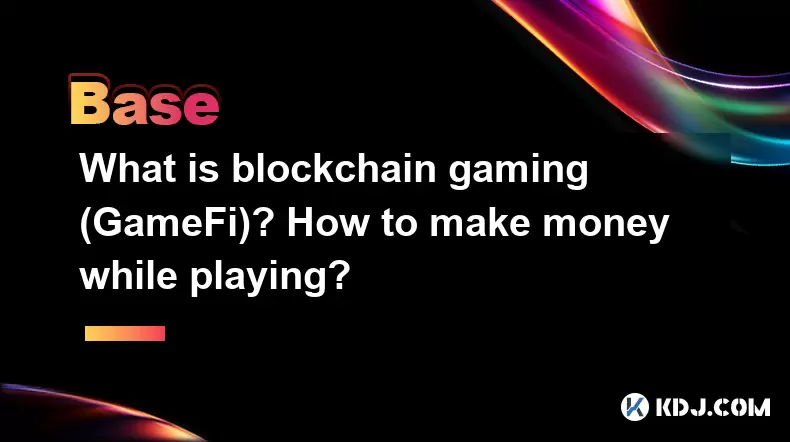
What is blockchain gaming (GameFi)? How to make money while playing?
Jun 20,2025 at 07:56am
Understanding Blockchain Gaming (GameFi)Blockchain gaming, often referred to as GameFi, is a fusion of blockchain technology and video games. It enables players to own in-game assets through non-fungible tokens (NFTs) and earn rewards via cryptocurrencies or token-based systems. Unlike traditional games where items are controlled by centralized develope...
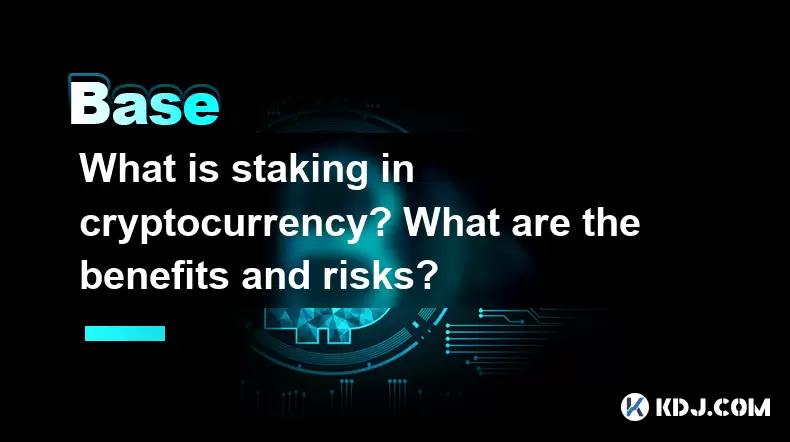
What is staking in cryptocurrency? What are the benefits and risks?
Jun 22,2025 at 10:01am
Understanding the Concept of Staking in CryptocurrencyStaking in cryptocurrency refers to the process of actively participating in transaction validation on a blockchain network that uses a Proof-of-Stake (PoS) consensus mechanism. Instead of miners competing to solve complex mathematical puzzles as in Proof-of-Work systems like Bitcoin, PoS blockchains...
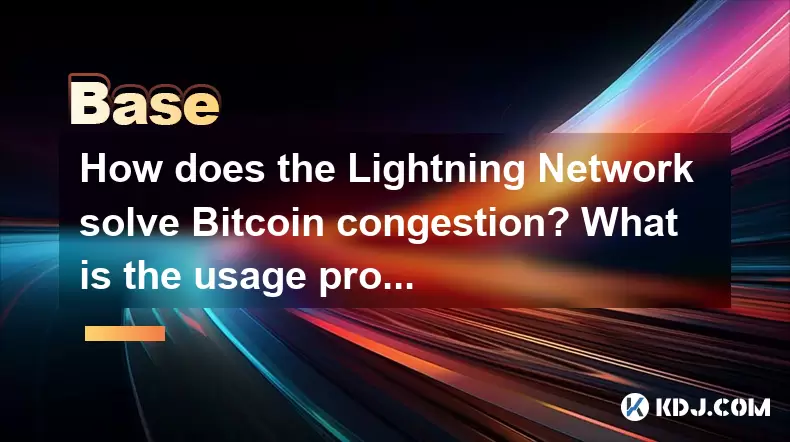
How does the Lightning Network solve Bitcoin congestion? What is the usage process?
Jun 23,2025 at 06:21pm
Understanding Bitcoin Network CongestionBitcoin, as a decentralized digital currency, operates on a blockchain that records every transaction in a public ledger. Each block has a limited size, typically 1 megabyte, which allows for only a certain number of transactions per second (TPS). When the number of transactions increases, the network becomes cong...

What is an oracle in blockchain? How to ensure data authenticity?
Jun 19,2025 at 08:49pm
Understanding the Role of an Oracle in BlockchainIn the context of blockchain technology, an oracle serves as a bridge between the blockchain and external data sources. While blockchains are inherently secure and decentralized, they cannot access real-world information on their own. Oracles enable smart contracts to interact with off-chain data such as ...

What are ICOs and IDOs in cryptocurrency? How to identify high-quality projects?
Jun 22,2025 at 11:49am
Understanding ICOs in CryptocurrencyInitial Coin Offerings (ICOs) are fundraising mechanisms used by cryptocurrency startups to raise capital for their projects. In an ICO, a company creates and sells its own tokens to investors in exchange for established cryptocurrencies like Bitcoin or Ethereum. The process typically involves the release of a whitepa...

What is the core concept of Web3.0? How is it different from Web2.0?
Jun 21,2025 at 05:56pm
Decentralization as the Foundation of Web3.0The core concept of Web3.0 revolves around decentralization, which fundamentally challenges the centralized architecture of Web2.0. In Web3.0, control and ownership are distributed across a network rather than being held by a central authority or corporation. This is achieved primarily through blockchain techn...

What is blockchain gaming (GameFi)? How to make money while playing?
Jun 20,2025 at 07:56am
Understanding Blockchain Gaming (GameFi)Blockchain gaming, often referred to as GameFi, is a fusion of blockchain technology and video games. It enables players to own in-game assets through non-fungible tokens (NFTs) and earn rewards via cryptocurrencies or token-based systems. Unlike traditional games where items are controlled by centralized develope...

What is staking in cryptocurrency? What are the benefits and risks?
Jun 22,2025 at 10:01am
Understanding the Concept of Staking in CryptocurrencyStaking in cryptocurrency refers to the process of actively participating in transaction validation on a blockchain network that uses a Proof-of-Stake (PoS) consensus mechanism. Instead of miners competing to solve complex mathematical puzzles as in Proof-of-Work systems like Bitcoin, PoS blockchains...

How does the Lightning Network solve Bitcoin congestion? What is the usage process?
Jun 23,2025 at 06:21pm
Understanding Bitcoin Network CongestionBitcoin, as a decentralized digital currency, operates on a blockchain that records every transaction in a public ledger. Each block has a limited size, typically 1 megabyte, which allows for only a certain number of transactions per second (TPS). When the number of transactions increases, the network becomes cong...
See all articles

























































































